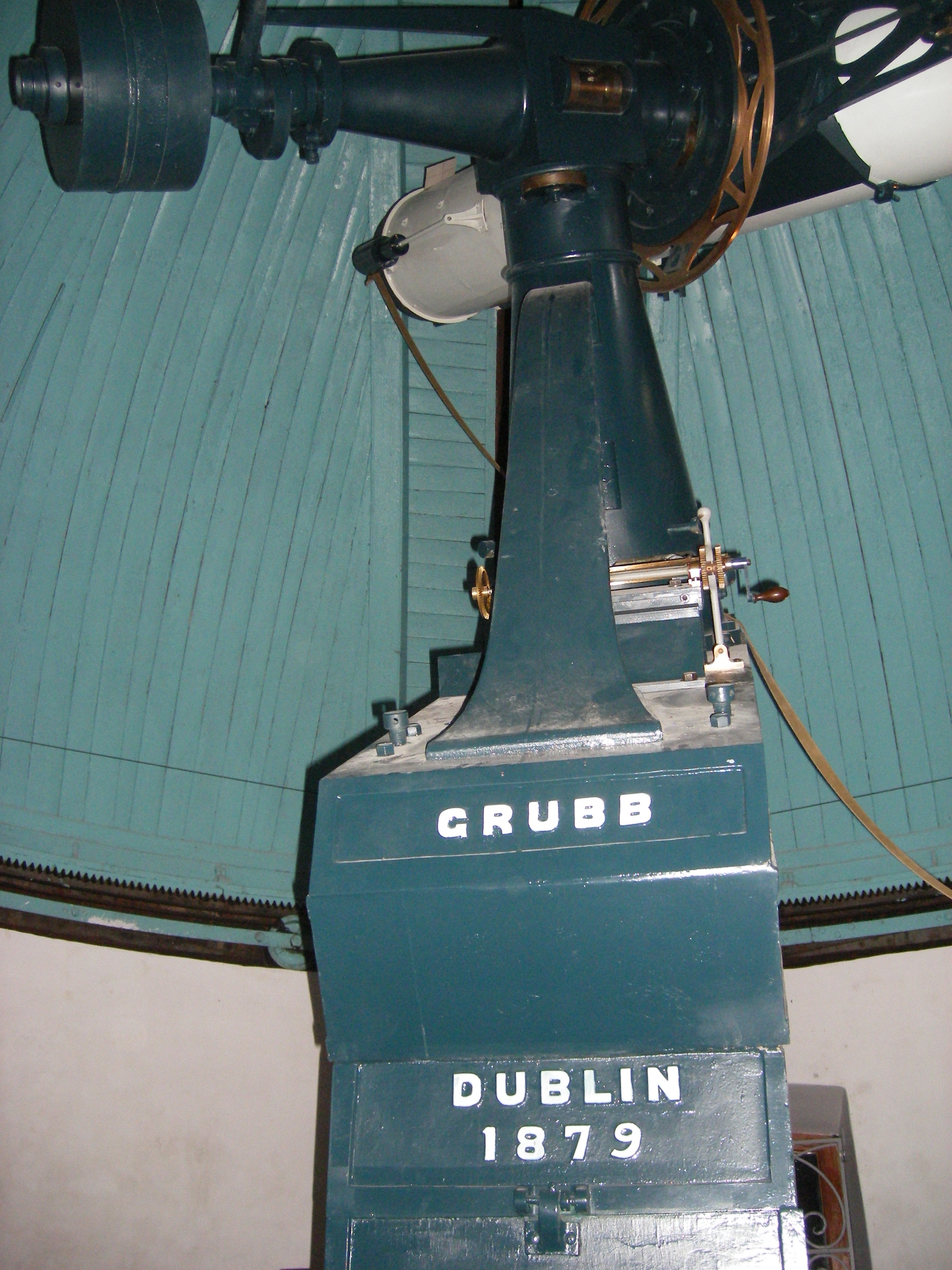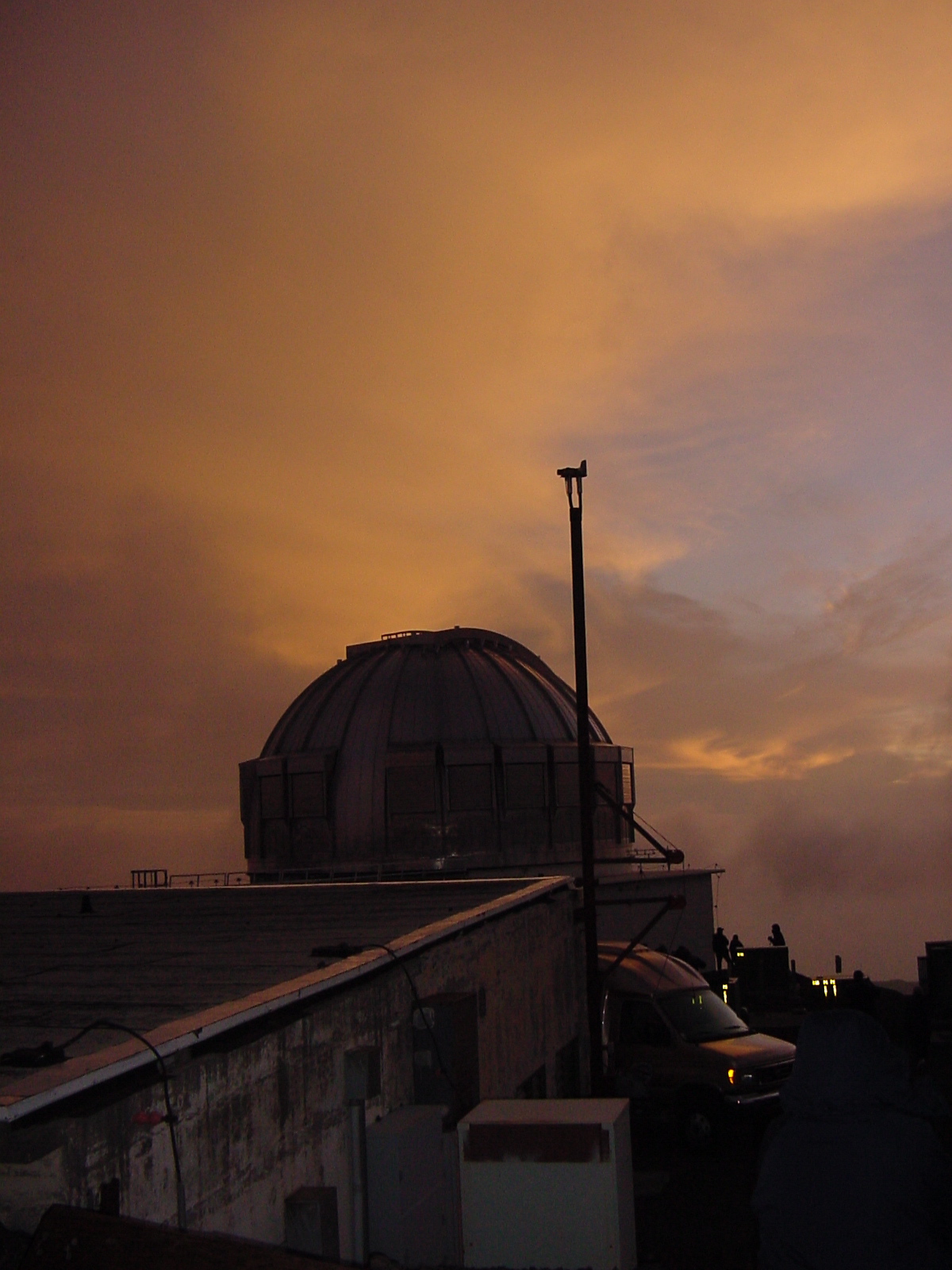|
Sir Howard Grubb, Parsons And Co
Sir Howard Grubb, Parsons and Co. Ltd. was a telescope manufacturer, more commonly known as Grubb Parsons. It was based in Newcastle upon Tyne, in England. They were a noted telescope maker throughout the 19th and 20th century, making telescope throughout the World and some of the largest British telescopes, including one of their final projects, the William Herschel Telescope in the 1980s. In the late 1800s they were one of the few companies that could make large doublet objective lenses. History The company was founded in Dublin by Thomas Grubb as the Grubb Telescope Company in 1833.Backyard Voyager Page 1 Thomas Grubb was joined in 1864 by his son who built on the company's reputation for quality |
Coats Observatory, Paisley
Coats Observatory is Scotland's oldest public observatory. It is currently closed for refurbishment as part of a 4-year long £42m transformation of the observatory and museum buildings. Located in Oakshaw Street West, Paisley, Renfrewshire, the observatory has been operational since 1 October 1883 and continues to function to this day, offering visitors the opportunity to view the night sky through the powerful telescopes housed within the building. The observatory is currently closed for redevelopment and is due to reopen in 2023. History Foundation of Coats Observatory The idea to create an observatory in Paisley came from the annual general meeting of the Paisley Philosophical Institution (PPI) held in 1880. The PPI was founded on 13 October 1808, having its origins among the educated and professional gentlemen of the burgh, such as ministers, doctors, lawyers and bankers. These 'noble pioneers of philosophy' ardner, P5banded together with a view to improving themselves ... [...More Info...] [...Related Items...] OR: [Wikipedia] [Google] [Baidu] |
Vienna Observatory
The Vienna Observatory (german: Universitätssternwarte Wien) is an astronomical observatory in Vienna, Austria. It is part of the University of Vienna. The first observatory was built in 1753–1754 on the roof of one of the university buildings. A new observatory was built between 1874 and 1879, and was finally inaugurated by Emperor Franz Joseph I of Austria in 1883. The main dome houses a refractor with a diameter of and a focal length of built by the Grubb Telescope Company. At that time, it was the world's largest refracting telescope. Land for the new observatory was purchased in 1872, and was noted for having increased elevations (about 150 ft) above the city. Construction started in March 1874, and it was opened with new instruments in 1877. The overall design had various rooms and three main domes, one for the Grubb refractor and then two smaller domes, and some terraces. At this time there were larger aperture reflecting telescopes, and the main technologies o ... [...More Info...] [...Related Items...] OR: [Wikipedia] [Google] [Baidu] |
List Of Largest Optical Telescopes In The 19th Century
List of largest optical telescopes in the 19th century, are listings of what were, for the time period of the 19th century large optical telescopes. See List of largest optical telescopes in the 20th century for the 1900s. The list includes various refractor and reflector that were active some time between about 1799 to 1901. The main reflecting technology early on, speculum metal reflected some 2/3 of light, and also had higher maintenance due to tarnishing. Another technology were the 2-element refractors, which were extensively used in 19th century observatories despite their small apertures compared to the largest metal mirror, and later glass telescopes. The technology for silver-coated glass mirrors was developed in the mid-19th century, but was slow to catch on. A major technology advance of this time was the development of astrophotography, and some telescopes were tailored to this application. Also, a wide variety of scientific instruments were developed, such as for spec ... [...More Info...] [...Related Items...] OR: [Wikipedia] [Google] [Baidu] |
BBC News
BBC News is an operational business division of the British Broadcasting Corporation (BBC) responsible for the gathering and broadcasting of news and current affairs in the UK and around the world. The department is the world's largest broadcast news organisation and generates about 120 hours of radio and television output each day, as well as online news coverage. The service maintains 50 foreign news bureaus with more than 250 correspondents around the world. Deborah Turness has been the CEO of news and current affairs since September 2022. In 2019, it was reported in an Ofcom report that the BBC spent £136m on news during the period April 2018 to March 2019. BBC News' domestic, global and online news divisions are housed within the largest live newsroom in Europe, in Broadcasting House in central London. Parliamentary coverage is produced and broadcast from studios in London. Through BBC English Regions, the BBC also has regional centres across England and national news c ... [...More Info...] [...Related Items...] OR: [Wikipedia] [Google] [Baidu] |
Isaac Newton Telescope
The Isaac Newton Telescope or INT is a 2.54 m (100 in) optical telescope run by the Isaac Newton Group of Telescopes at Roque de los Muchachos Observatory on La Palma in the Canary Islands since 1984. Originally the INT was situated at Herstmonceux Castle in Sussex, England, which was the site of the Royal Greenwich Observatory after it moved away from Greenwich due to light pollution. It was inaugurated in 1967 by Queen Elizabeth II. Herstmonceux suffered from poor weather, and the advent of mass air travel made it plausible for UK astronomers to run an overseas observatory. In 1979, the INT was shipped to La Palma, where it has remained ever since. It saw its second first light in 1984, with a video camera. A major change was the mirror was now made of the new type Zerodur glass, as compared to the old mirror's Pyrex glass. Today, it is used mostly with the Wide Field Camera (WFC), a four CCD instrument with a field of view of 0.56×0.56 square degrees which was commis ... [...More Info...] [...Related Items...] OR: [Wikipedia] [Google] [Baidu] |
UK Infrared Telescope
The United Kingdom Infra-Red Telescope (UKIRT) is a 3.8 metre (150 inch) infrared reflecting telescope, the second largest dedicated infrared (1 to 30 micrometres) telescope in the world. It is located on Mauna Kea, Hawai'i as part of Mauna Kea Observatory. Until 2014 it was operated by the Joint Astronomy Centre in Hilo. It was owned by the United Kingdom Science and Technology Facilities Council. UKIRT is currently being funded by NASA and operated under scientific cooperation between Lockheed Martin Advanced Technology Center, the University of Hawaii, and the U. S. Naval Observatory. The telescope is set to be decommissioned after completion of the Thirty Meter Telescope as part of the Mauna Kea Comprehensive Management Plan. Design Like related telescopes on Tenerife, it is a Cassegrain device with a thin primary mirror, around 2/3 thinner than in other contemporary devices and weighing only 6.5 tonnes. When trying to view distant objects in infra-red local sources of h ... [...More Info...] [...Related Items...] OR: [Wikipedia] [Google] [Baidu] |
Anglo-Australian Telescope
The Anglo-Australian Telescope (AAT) is a 3.9-metre equatorially mounted telescope operated by the Australian Astronomical Observatory and situated at the Siding Spring Observatory, Australia, at an altitude of a little over 1,100 m. In 2009, the telescope was ranked as having the fifth-highest-impact of the world's optical telescopes. In 2001–2003, it was considered the most scientifically productive 4-metre-class optical telescope in the world based on scientific publications using data from the telescope. The telescope was commissioned in 1974 with a view to allowing high-quality observations of the sky from the Southern Hemisphere. At the time, most major telescopes were located in the Northern Hemisphere, leaving the southern skies poorly observed. It was the largest telescope in the Southern Hemisphere from 1974 to 1976, then a close second to the Víctor M. Blanco Telescope from 1976 until 1998, when the first ESO Very Large Telescope (VLT) was opened. The AAT was ... [...More Info...] [...Related Items...] OR: [Wikipedia] [Google] [Baidu] |
Charles Algernon Parsons
Sir Charles Algernon Parsons, (13 June 1854 – 11 February 1931) was an Anglo-Irish engineer, best known for his invention of the compound steam turbine, and as the eponym of C. A. Parsons and Company. He worked as an engineer on dynamo and turbine design, and power generation, with great influence on the naval and electrical engineering fields. He also developed optical equipment for searchlights and telescopes. Career and commercial activity Parsons was born into an Anglo-Irish family in London as the youngest son of the famous astronomer William Parsons, 3rd Earl of Rosse. (The family seat is Birr Castle, County Offaly, Ireland, and the town of Birr was called Parsonstown, after the family, from 1620 to 1901.) With his three brothers, Parsons was educated at home in Ireland by private tutors (including John Purser), all of whom were well versed in the sciences and also acted as practical assistants to the Earl in his astronomical work. (One of them later bec ... [...More Info...] [...Related Items...] OR: [Wikipedia] [Google] [Baidu] |
Refracting Telescope
A refracting telescope (also called a refractor) is a type of optical telescope that uses a lens (optics), lens as its objective (optics), objective to form an image (also referred to a dioptrics, dioptric telescope). The refracting telescope design was originally used in spyglasses and astronomy, astronomical telescopes but is also used for long-focus lens, long-focus camera lenses. Although large refracting telescopes were very popular in the second half of the 19th century, for most research purposes, the refracting telescope has been superseded by the reflecting telescope, which allows larger apertures. A refractor's magnification is calculated by dividing the focal length of the objective lens by that of the eyepiece. Refracting telescopes typically have a lens at the front, then a optical train, long tube, then an eyepiece or instrumentation at the rear, where the telescope view comes to focus. Originally, telescopes had an objective of one element, but a century later, tw ... [...More Info...] [...Related Items...] OR: [Wikipedia] [Google] [Baidu] |
Carte Du Ciel
The Carte du Ciel (literally, 'Map of the Sky') and the Astrographic Catalogue (or Astrographic Chart) were two distinct but connected components of a massive international astronomical project, initiated in the late 19th century, to catalogue and map the positions of millions of stars as faint as 11th or 12th magnitude. Twenty observatories from around the world participated in exposing and measuring more than 22,000 (glass) photographic plates in an enormous observing programme extending over several decades. Despite, or because of, its vast scale, the project was only ever partially successful – the Carte du Ciel component was never completed, and for almost half a century the Astrographic Catalogue part was largely ignored. However, the appearance of the Hipparcos Catalogue in 1997 has led to an important development in the use of this historical plate material. Origins and goals A vast and unprecedented international star-mapping project was initiated in 1887 by Pari ... [...More Info...] [...Related Items...] OR: [Wikipedia] [Google] [Baidu] |
Astrograph
An astrograph (or astrographic camera) is a telescope designed for the sole purpose of astrophotography. Astrographs are mostly used in wide-field astronomical surveys of the sky and for detection of objects such as asteroids, meteors, and comets. Improvements in photography in the middle 19th century led to designs dedicated to astrophotography, and they were also popular in the 20th century. As in other photography, chemicals were used that respond to light, recorded on a glass photographic plate or sometimes on photographic film. Many observatories of this period used an astrograph, beside instruments like the transit telescope, great refractors, and chronometers, or instruments for observing the Sun. Astrographs were often used to make surveys of the night sky, and one of the famous projects was Carte du Ciel. Discoveries using an astrograph include then-planet Pluto. Rather than looking through the telescope, it was discovered by using a blink comparator with im ... [...More Info...] [...Related Items...] OR: [Wikipedia] [Google] [Baidu] |









